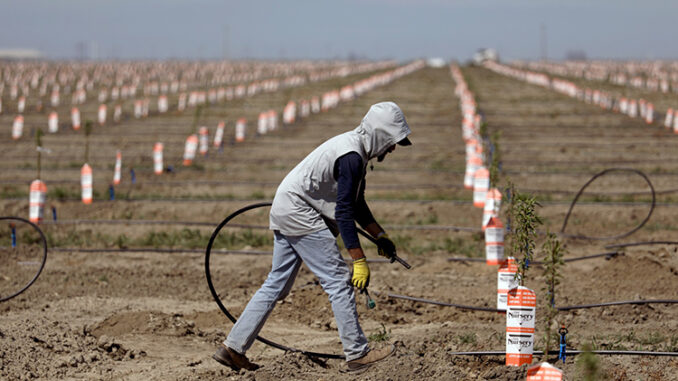
VISALIA, Calif. —
As yet another season of drought returns to California, the mood has grown increasingly grim across the vast and fertile San Joaquin Valley.
Renowned for its bounty of dairies, row crops, grapes, almonds, pistachios and fruit trees, this agricultural heartland is still reeling from the effects of the last punishing drought, which left the region geologically depressed and mentally traumatized.
Now, as the valley braces for another dry spell of undetermined duration, some are openly questioning the future of farming here, even as legislative representatives call on Gov. Gavin Newsom to declare a drought emergency. Many small, predominantly Latino communities also face the risk of having their wells run dry.
Drought is nothing new to California or the West, and generations of San Joaquin Valley farmers have endured many dry years over the last century. Often, they have done so by drilling more wells. Advertisement
California has entered another drought. But depending on who you ask, the last one may have never really ended.
However, some growers say they are now facing a convergence of forces that is all but insurmountable — a seemingly endless loop of hot, dry weather, new environmental protections and cutbacks in water allotments.
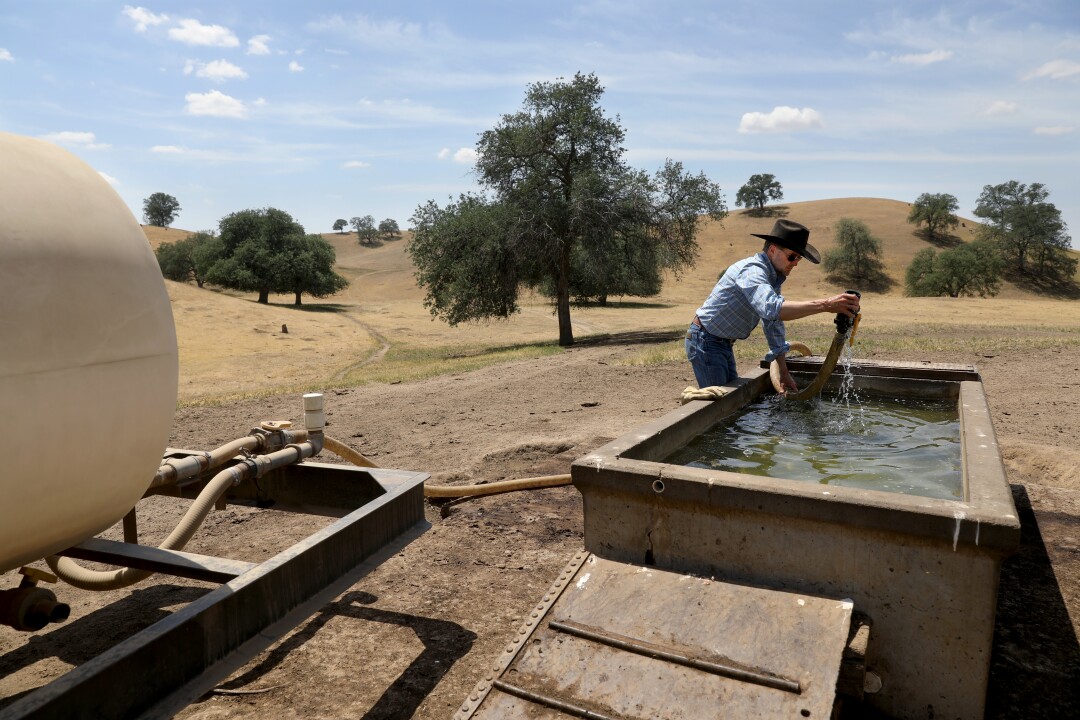
“I’m proud of our family’s history in this part of the state,” said John Guthrie, president of the Tulare County Farm Bureau. “If not for that, I would seriously consider bowing out of this business.”
The cattle rancher and farm owner said his family has been working the land here for more than 150 years. However, he wonders how much longer that will continue.
Most recently, state and federal allocations of surface water were slashed to a trickle due to less snowpack in the Sierra Nevada— a move expected to force some growers to search underground for additional sources of water to keep their farms from ruin. Advertisement
Even more frustrating, growers say, is a complex law passed in 2014 — during the last drought — that requires all groundwater taken from wells to match the amount of water returned to aquifers by 2040. Experts say meeting its requirements will mean taking about 1 million acres of farmland out of production statewide.

“Things were tough enough without having to deal with regulations that are becoming more onerous by the day,” Guthrie said.
In recent weeks Central Valley Republicans in particular have urged Newsom to declare a statewide drought emergency, which would allow state regulators to relax water quality and environmental standards that limit deliveries from the Sacramento-San Joaquin River Delta, California’s water hub. They were enraged recently when Newsom declared drought emergencies in Sonoma and Mendocino counties only.
Record amounts of regional water storage will buffer urban Southern California from the effects of drought this year.
April 2, 2021
Much of Tulare County sits atop groundwater basins that have helped farmers compensate when there was little or no available surface water. But unlimited pumping during the historic drought of 2012-16, and the 2007-09 drought before that, has set off a cascade of events that has proved disastrous.
Large farms drilled to depths of more than 1,000 feet to sustain thirsty citrus orchards and almond and pistachio groves that had drawn hedge funds and big corporations into the business.
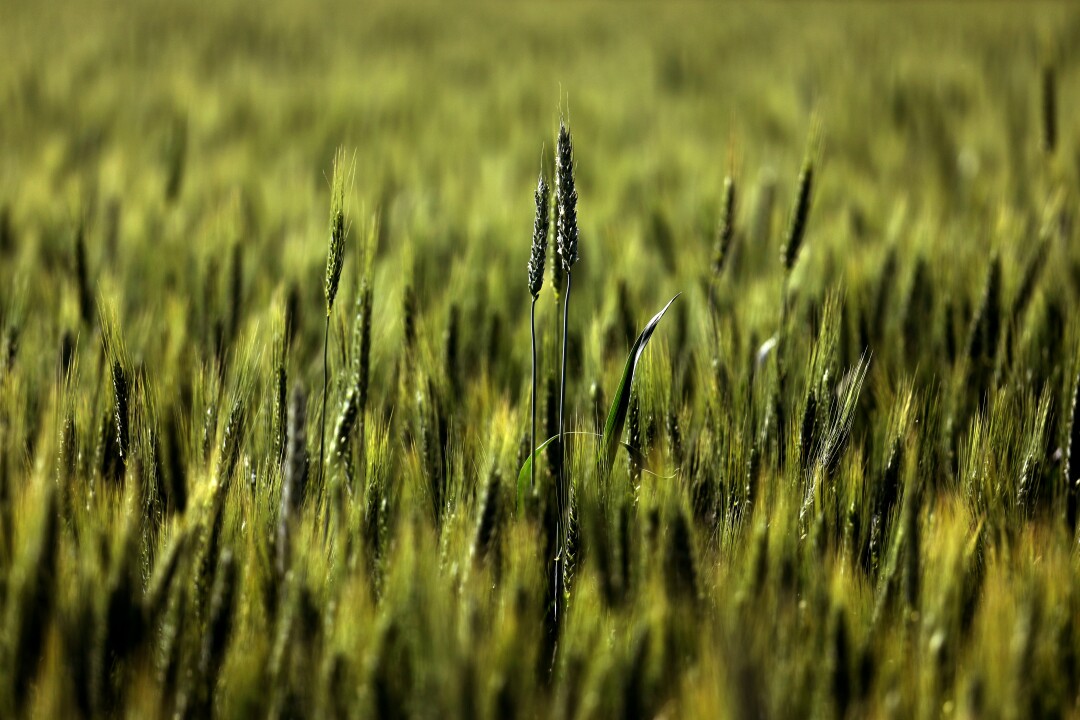
“I’m proud of our family’s history in this part of the state. If not for that, I would seriously consider bowing out of this business.”
John Guthrie, cattle rancher and president of the Tulare County Farm Bureau

As farmers punched more wells into the earth, the groundwater table plummeted, drying up old wells and causing the landto sink up to 2 feet a year in some places, damaging infrastructure.Also,as groundwater levels fell, pesticides and nitrates from fertilizer and animal waste leached into the private groundwater supplies of impoverished farmworker communities in such locations as Tooleville, East Orosi and East Porterville in Tulare County and Tombstone Territory in Fresno County.
These and other rural burgs got international attention after wells that had served them for more than half a century went dry or became polluted. Unincorporated areas of Tulare County were hit particularly hard.
Water levels at Lake Oroville have dropped to 42% of its 3,537,577 acre foot capacity.
April 28, 2021
As a result, families were forced to forgo showers and dump a bucket of water into toilets to flush.
Cheers and chants of “Si se puede!” — yes, we can — rang out when Newsom visited Tombstone Territory to sign into law Senate Bill 200, the Safe and Affordable Drinking Water Fund. The bill set aside up to $130 million a year for safe drinking water projects.
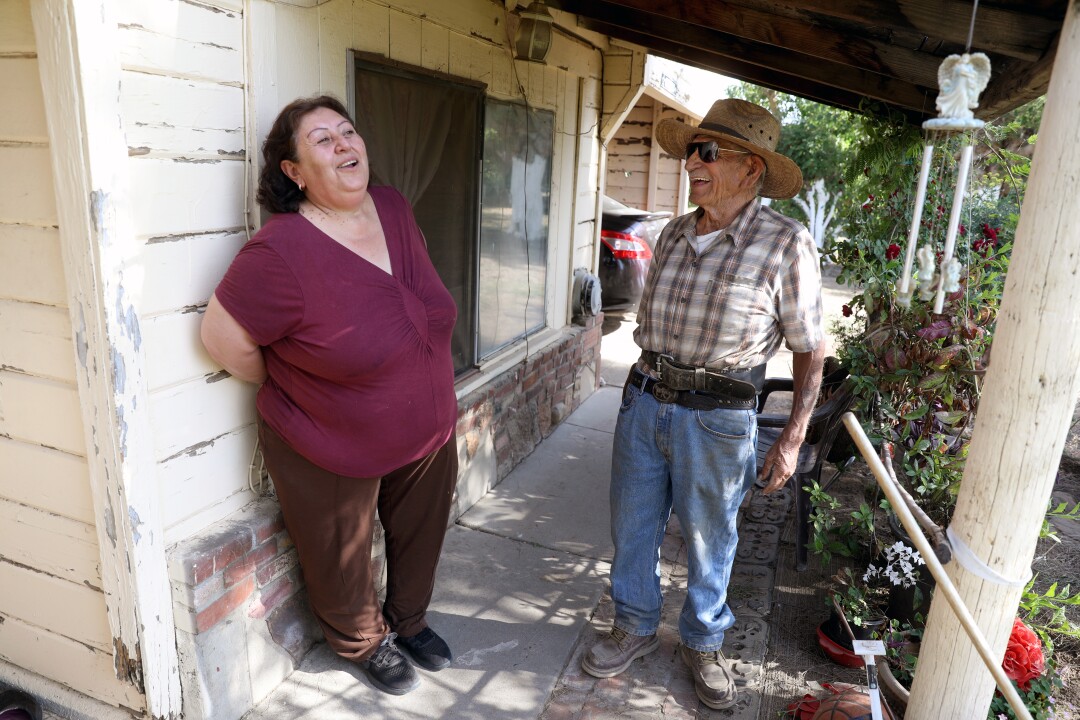
“The governor did his part by coming out here to listen to our problems before signing the bill. But our problems didn’t end that day,” said Jovita Torres, a resident and community activist.
“I’ve still got dirty water coming out of my tap,” she said, “and bottled water is still being delivered to our community every Friday.”
Her neighbor, Rodolfo Romero, 95, was not surprised.
“What’s happening right now,” he said with a wry smile, “involves climate changes and political forces that are too big to stop. Advertisement
“The people making important decisions are elected officials and big farmers who have money and power,” he added. “We have no power. So, the way I see it, there is no way to live off our wells anymore. Those days are over.”

Leslie Martinez of the advocacy group Leadership Counsel would not go that far.
“State and county agencies are to blame,” she said, “and must be held accountable for overlooking contaminant plumes due to heavy groundwater pumping and failing to address a basic human right in disadvantaged communities to have reliable sources of clean water.
“They have treated these people like disposable labor,” she added, “which is heartbreaking and wrong, because they helped build this region’s agricultural industry.”
Environmentalists and tribal leaders are fighting a plan by K2 Gold to sell its mining claims to a large corporation for development.
March 14, 2021
Seasonal droughts are typical to California’s Mediterranean climate, but the effects of global warming, due to the burning of fossil fuels, have now made it easier for the state to slip into periods of dryness, and harder for it to get out, experts say.
This trend toward more frequent and more severe droughts comes at a time of immense change in agriculture.
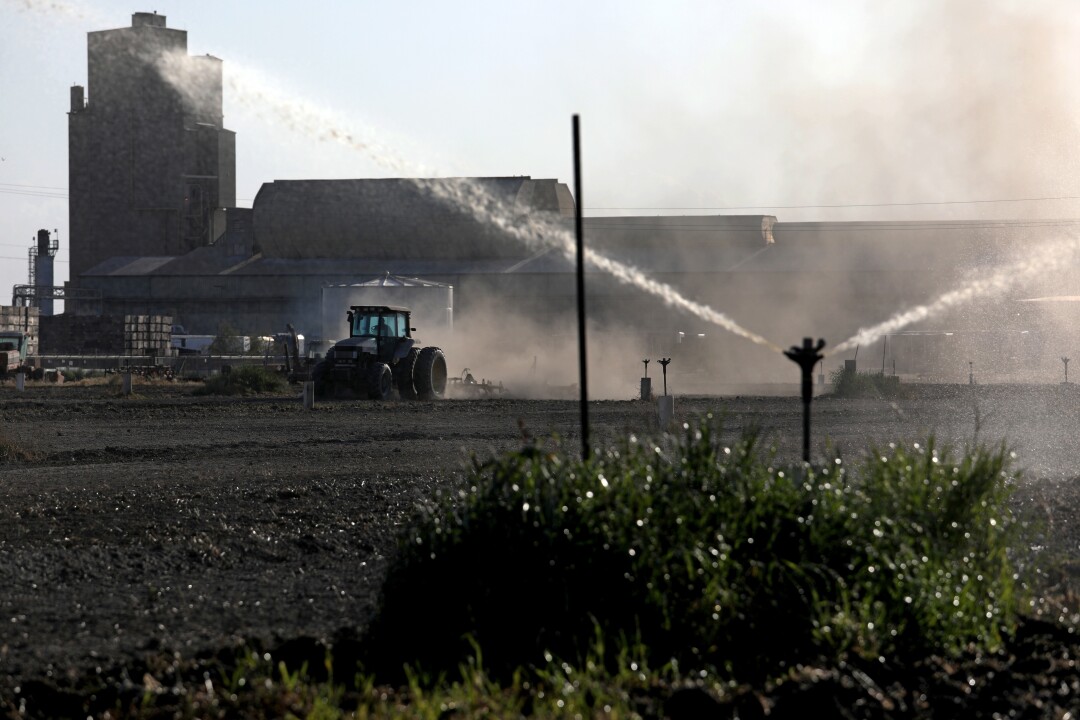
Tulare County, one of Central California’s top agricultural producers, was named after Tulare Lake, once the largest body of fresh water west of the Mississippi. Farmers drained the lake dry in the 1930s to transform desert scrub into croplands. Advertisement
The 4,839-square-mile county just west of Sequoia National Park is the domain of the Tulare County Farm Bureau, which in the 1960s boasted 5,000 members.
Since then, membership has dwindled to a record low of 1,200, the result of smaller growers selling out and consolidation as agricultural production shifts toward larger farms.
This year, with half the county enshrouded in severe drought conditions, ranchers are culling cattle herds for sale months earlier than usual, and farmers are making tough decisions about idling row crops such as lettuce and onions in order to devote precious water supplies to higher-value permanent plantings like almonds and pistachios.
This latest drought has also raised the once-unthinkable specter of croplands yielding to a new future of subdivisions, industrial parks and habitat development.
“If things continue in the direction they’re headed right now, there’s going to be lots of new open space around here and that ground will have to be used for something,” said Denise England, Tulare County Water Commission’s water resources program director.
“In the long term, I’m hopeful our economy might be replaced with something else, perhaps factories or business parks,” she said.
“American people have an important decision to make. Do they want their agricultural food grown locally, or in Mexico and China?”
Dino Giacomazzi, almond grower

That’s not the future that grower Dino Giacomazzi wants to see, but he concedes that change is inevitable.
In 2014, midway through the worst drought in state history, Giacomazzi closed his family’s 126-year-old dairy farm — the state’s oldest — and took up almond farming instead. Advertisement
“We just didn’t see a path forward in ‘cowdom,’” he said. “We had a very old 400-acre facility in an increasingly regulated world when it comes to air, food and water, and we were facing years of low milk prices.”
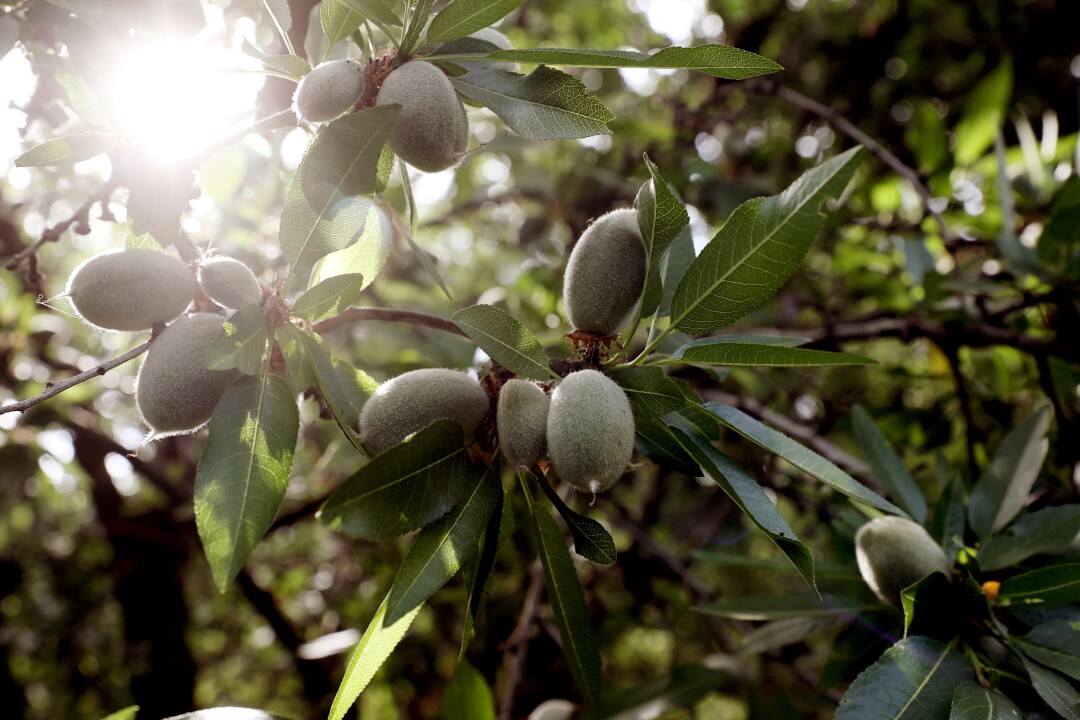
It wasn’t a smooth transition, however.
“As it turned out … California farmers planted too many almonds and oversupplied the market,” the 52-year-old said. “Then came the coronavirus pandemic, which raised the price of getting almonds to market out of the country.”
Whiplashing weather patterns due to climate change and state groundwater regulations that are just beginning to take effect are making the future even more uncertain.
“American people have an important decision to make,” Giacomazzi said. “Do they want their agricultural food grown locally, or in Mexico and China?”



Be the first to comment